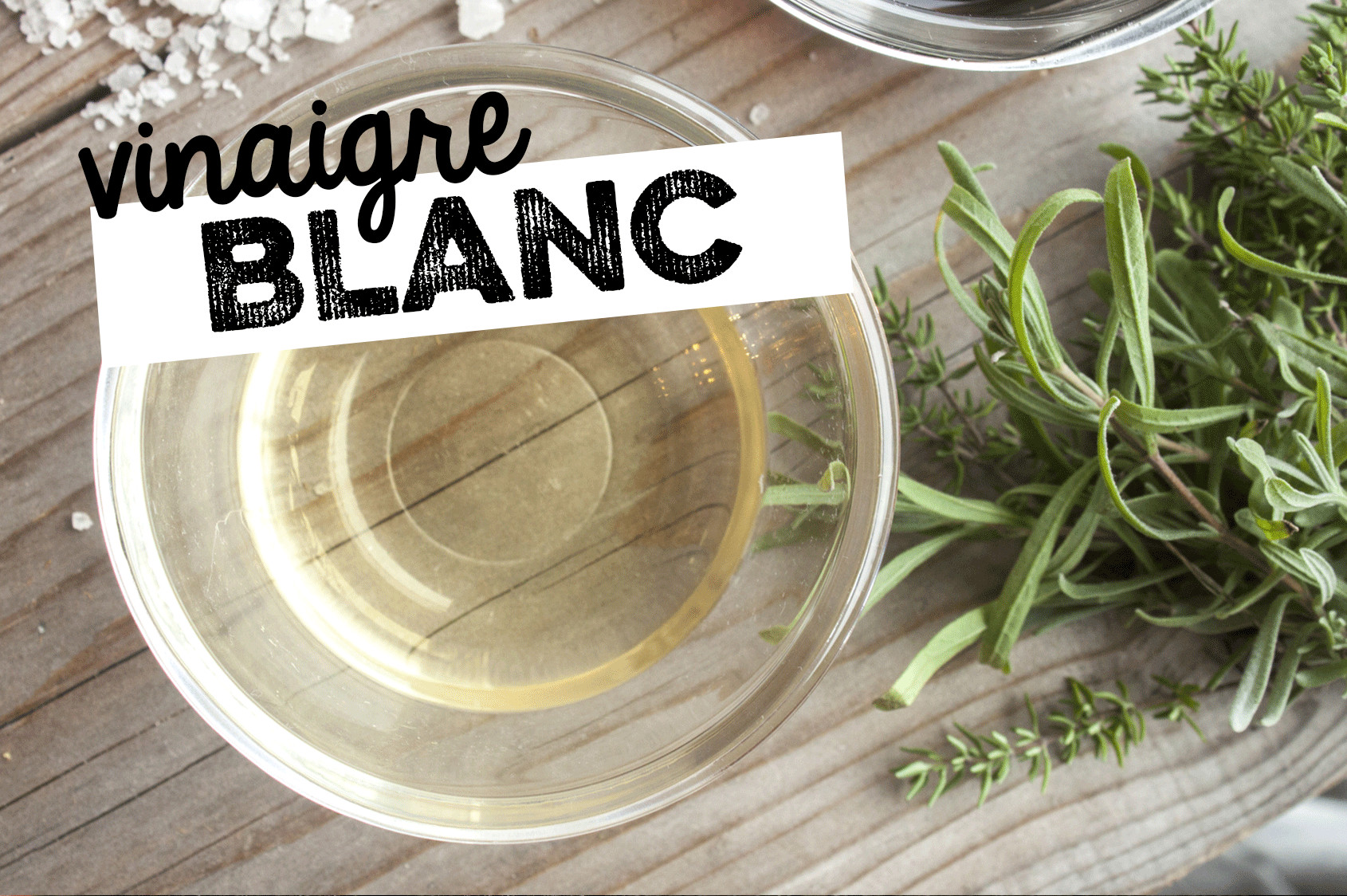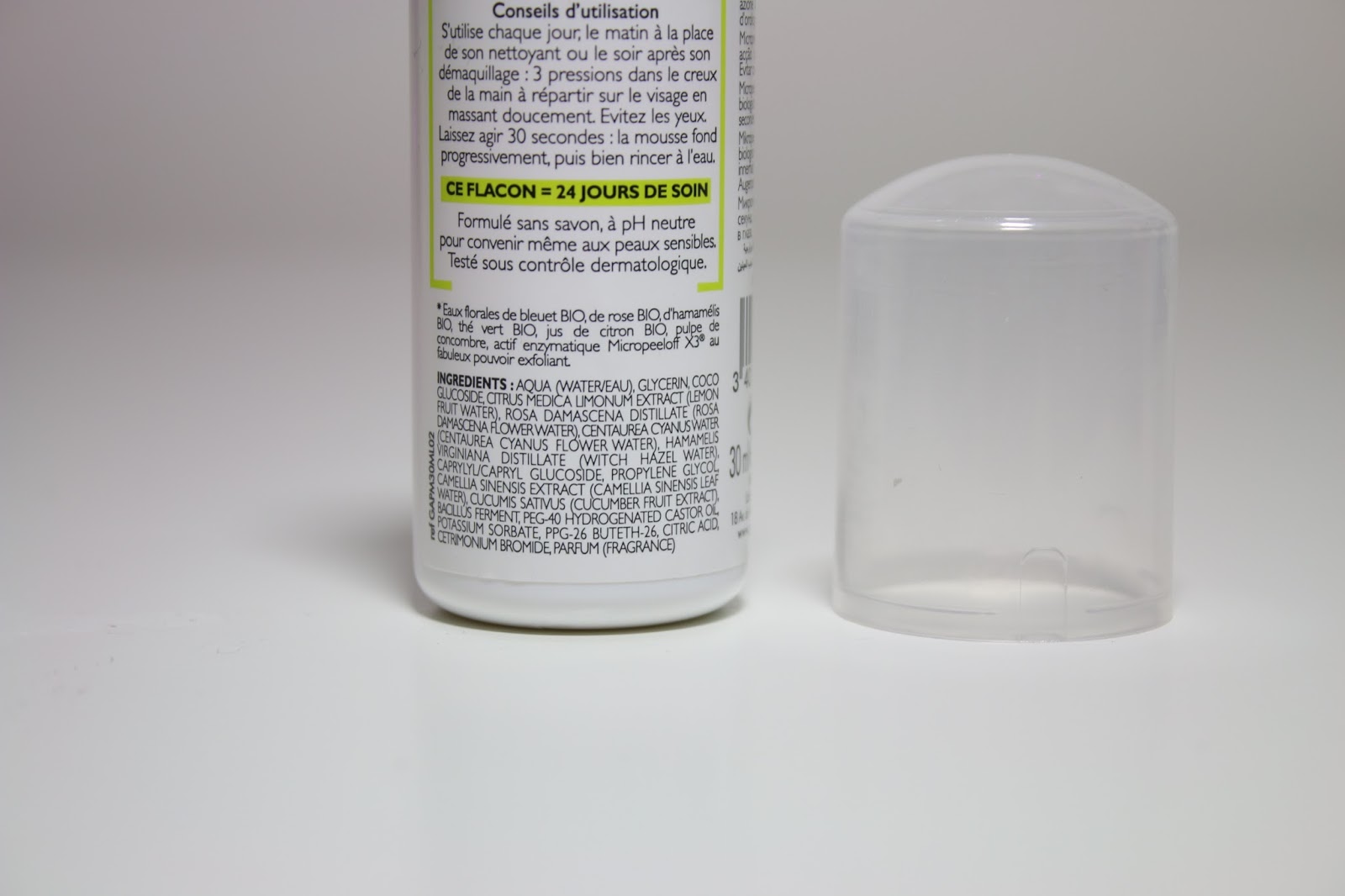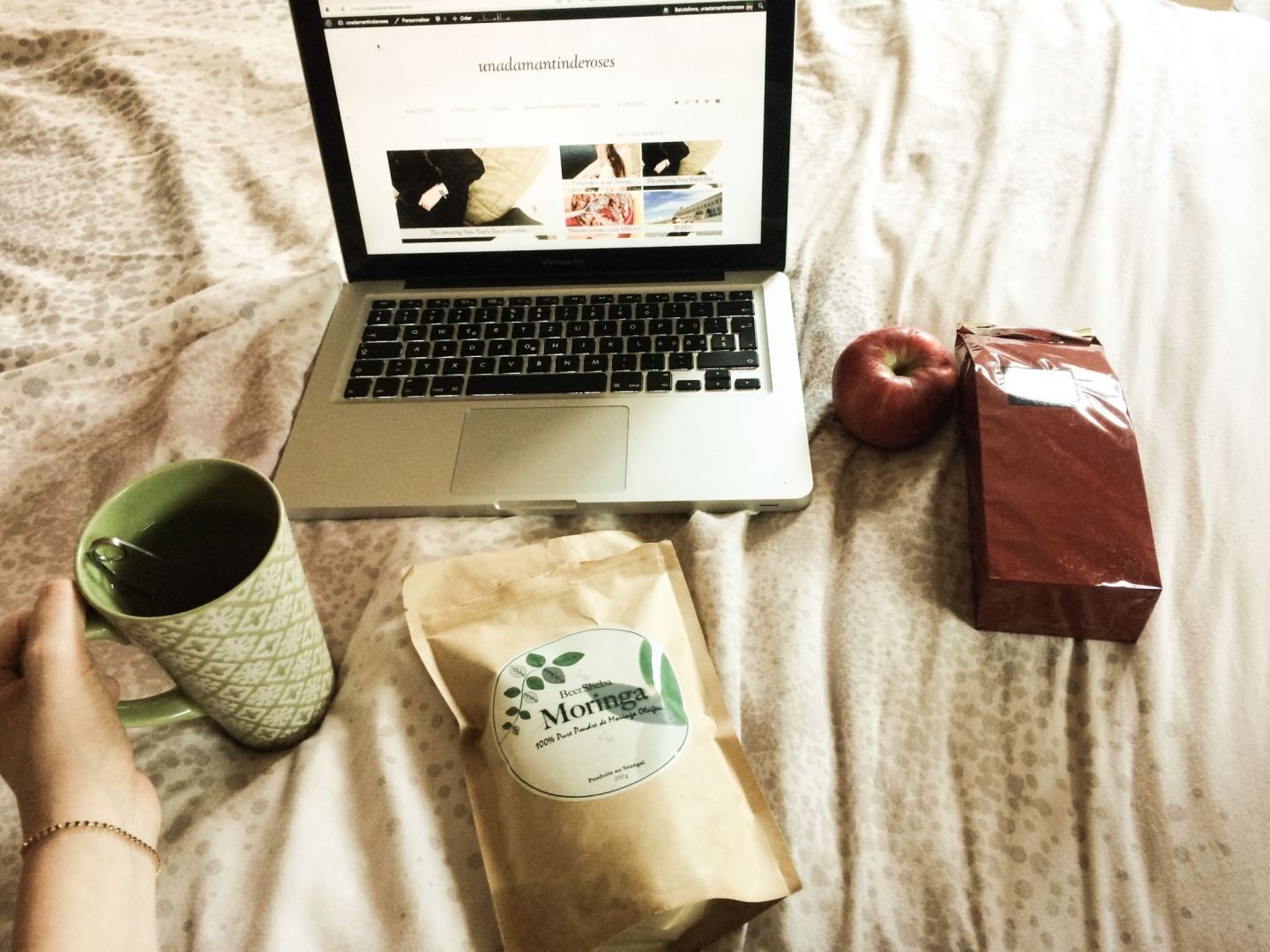How To Make Apple Cider Vinegar From Leftover Apples.
Nothing better than making your own products!
Apple cider vinegar is one of those products that you can easily make yourself :-)
What if I tell you that it will cost you almost nothing, it's even better isn't it?
Especially since apple cider vinegar is far from cheap! All you need here are leftover apples.
With this homemade recipe, you will save money and you will also know what you are putting in it. Look :

I confess that I am a huge fan of apple cider vinegar. I use it for everything: cleaning, cooking, caring for animals and everything in between.
And its health benefits are truly amazing. There are several recipes, but today I will show you how to make it from leftover apples.
I particularly like this method, because it allows me not to spoil anything. When you make a compote, for example, you use the fruit for your dessert and the peels and cores for the vinegar. There is no loss!
And besides, it's very easy to make ... and since I'm a big lazy person, this recipe suits me well.
Ingredients

- apple peels
- apple cores
- a tablespoon of sugar for 230 ml of water
- some water
- a glass jar (1 liter is good to start with, but you can do more later).
How to do
1. Peel the apples. Me, I love this device to peel them quickly.
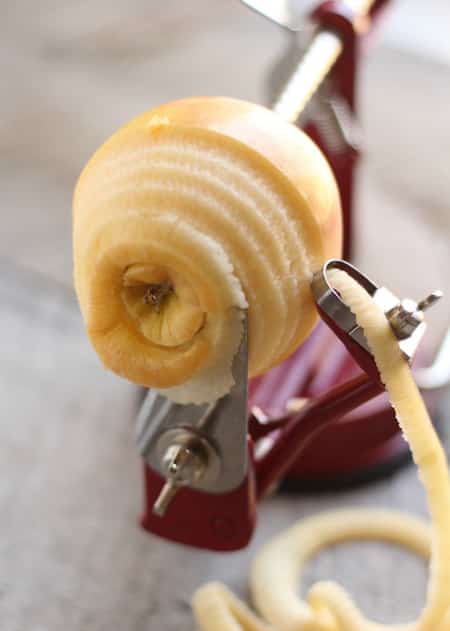
2. Fill ¾ of the glass jar with unused apple peels, cores and pieces.

3. Add the sugar and mix in the water until it is completely dissolved.
4. Pour in the water to completely cover the apple pieces. Leave some room at the top of the pot.
5. Cover the jar with a piece of cloth or coffee filter held with a rubber band.
6. Place the jar in a warm, dark place for about two weeks.
7. You can stir the mixture every 3-4 days, if you wish. If brownish / grayish scum develops on the top, it is simply a matter of removing it.
8. After two weeks, filter the liquid. Apple residues must be removed (they can still go into the composter).
9. At this point, the vinegar usually has a pleasant apple cider smell, but it still lacks its characteristic taste.
10. Then put the filtered liquid aside for 2 to 4 weeks.
Results

There you go, your homemade cider vinegar is already ready :-)
Now you know how to make apple cider vinegar.
You see when I told you that making apple cider vinegar was easy, it wasn't a joke!
You'll know your apple cider vinegar is ready once it has that unique vinegar smell and taste. If not, set the jar aside a little longer.
Conservation
Once you are satisfied with the taste of your apple cider vinegar, seal it tightly and store it in the refrigerator for as long as you want. Don't worry, it won't go out of date!
If a gelatinous film develops on the top of your vinegar, congratulations! You have created a "mother of vinegar". This mother can be used as a basis to restart the manufacture of future vinegar jars.
You can remove it and store it separately. Personally, I usually let it float in the vinegar jar.
You can use your homemade vinegar just like you would any store-bought one!
You can use it for cooking, cleaning, and everything in between (including as a slimming ingredient)!
To discover : 18 Uses of Apple Cider Vinegar That NOBODY Knows.
Additional advice
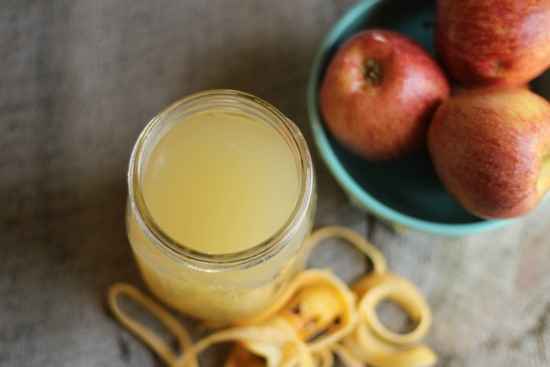
- If your family doesn't like apple peels in homemade desserts, making this vinegar is great for avoiding waste.
- You can use anything to make your vinegar: pieces of slightly bruised or blackened apples, peels or cores. However, avoid rotten or moldy fruit.
- You don't have enough apples to fill a jar? No problem ! Place your pieces in the freezer until you have enough to fill the jar.
- As we use the peels for this recipe, I strongly recommend to take organic apples to avoid pesticides and chemical residues.
- You can use honey instead of sugar in this recipe. However, the honey will slow the process down a bit. Also, keep in mind that living organisms will eat the sugar throughout the fermentation process, so there will be little sugar in the final product.
- You can make as much vinegar as you want. The first time, I made a 300 ml jar, now I am making large jars of several liters!
- You can also try with other fruit peels such as pears and peaches for example.
- Regarding the pickles that you could make, know that you should not use this type of homemade vinegar as a conversation liquid. Because to do this, you need a vinegar with 5% acetic acid. Since we cannot afford to check the acidity level of our homemade vinegar, it is best to avoid preserving jars of this vinegar. Prevention is better than cure !
Your turn...
Did you make this recipe for making apple cider vinegar? Let us know in the comments if it worked for you. We can't wait to hear from you!
Do you like this trick ? Share it with your friends on Facebook.
Also to discover:
11 Amazing Uses of Apple Cider Vinegar.
French Apples Are Well Poisoned With Pesticides: Justice Gives Greenpeace Reason.



